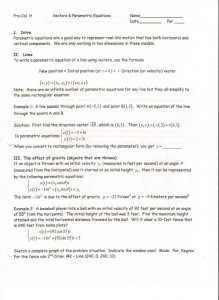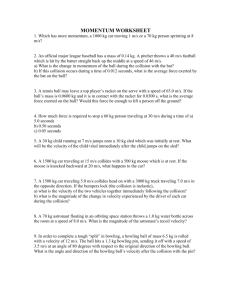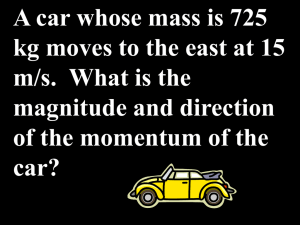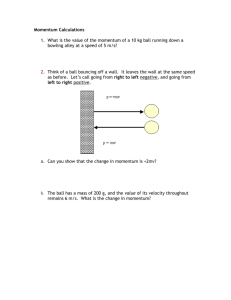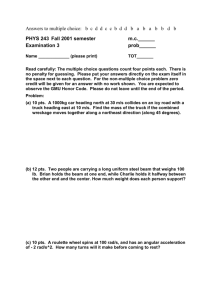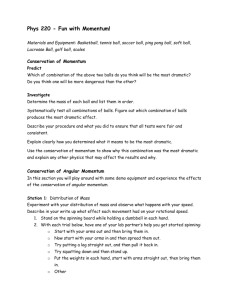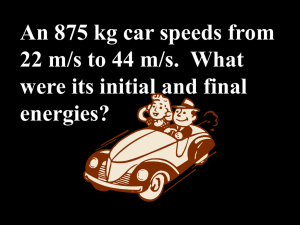PHYS 218 College Physics I
advertisement
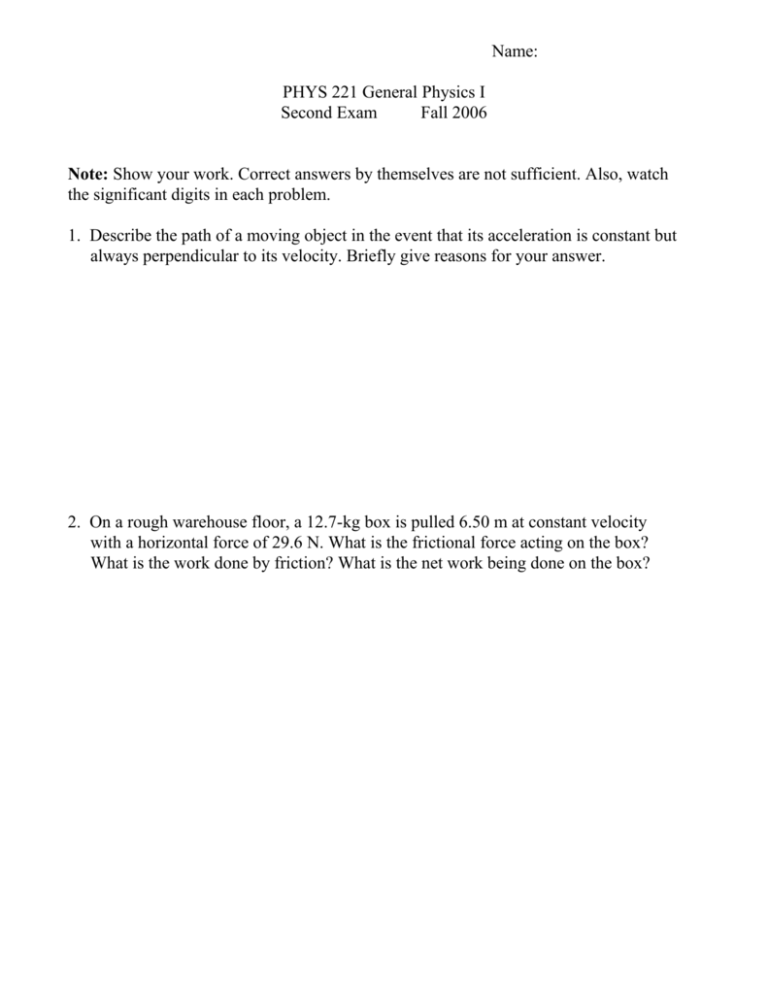
Name: PHYS 221 General Physics I Second Exam Fall 2006 Note: Show your work. Correct answers by themselves are not sufficient. Also, watch the significant digits in each problem. 1. Describe the path of a moving object in the event that its acceleration is constant but always perpendicular to its velocity. Briefly give reasons for your answer. 2. On a rough warehouse floor, a 12.7-kg box is pulled 6.50 m at constant velocity with a horizontal force of 29.6 N. What is the frictional force acting on the box? What is the work done by friction? What is the net work being done on the box? 2 Name: 3. A wheel rotating with an angular velocity of 12.3 rad/s comes to rest after 11.5 rad. What is the angular acceleration of the wheel during this time, assuming it is constant? 4. Two balls collide head-on and travel in the same straight line after the collision as before. The first ball (mass = 250. g) has an initial speed of 43.0 cm/s to the left. The second ball has a mass of 180. g and is initially at rest. After the collision, this ball has a velocity of 36.3 cm/s to the left. What is the velocity (speed and direction) of the first ball after the collision? 3 Name: 5. Where is the center of mass of two small balls if the first one (m = 25 g) is located at (3.2 i – 1.3 j) cm, the second one (m = 14 g) is at (1.7 i + 4.2 j) cm? 6. How long will it take a Ferris wheel to complete one revolution if a person at the top of the ride feels no force being exerted by the Ferris wheel and exerts no force on the Ferris wheel? That is, find the period of the rotation assuming there is no normal force at the top of the ride. The Ferris wheel is rotating with a constant speed, and its radius is 6.25 m. 4 Name: 7. A 26-g ball is dropped in oil and reaches a terminal velocity of 4.5 cm/s. If the form of the resistive force acting on it is R = - b v, find the value for b. 8. A 243-g ball is held against a spring (with a spring constant of 655 N/m) that has been compressed by 10.2 cm. After release, the ball rolls without losing energy to friction up an incline until it stops. Find the height of the ball when it comes to rest compared to where it began.


